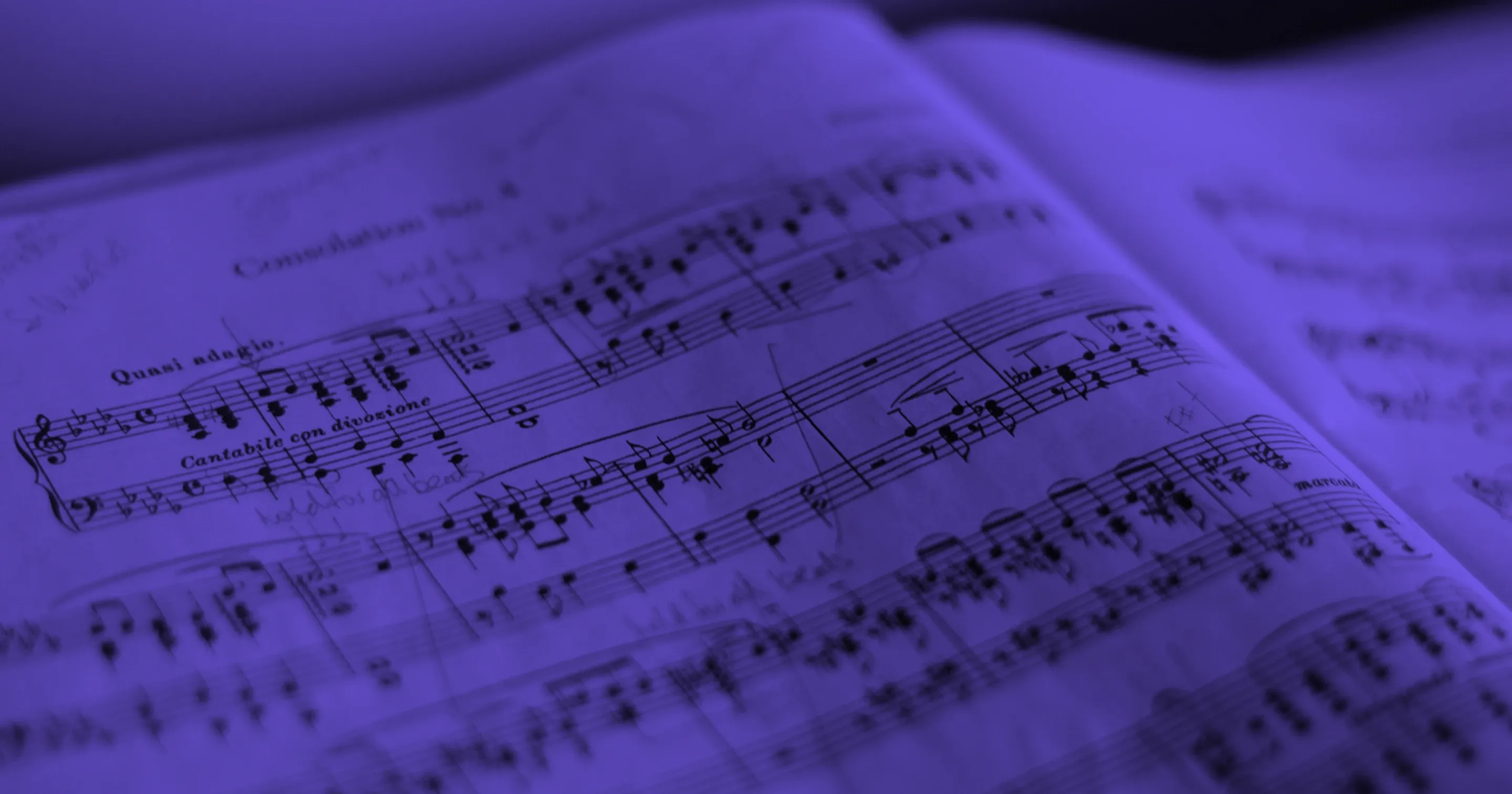
Ear Training: Songs to Practice Intervals
Learn to recognize musical intervals with ease! Here’s a comprehensive list of songs featuring ascending and descending intervals. Improve your music and production skills today.
Songs to Memorize Intervals
Recognizing intervals is a fundamental skill for any musician, whether you're a producer, composer, or performer. Your ability to identify intervals can significantly accelerate your music production process and elevate your creative output.
Why interval recognition is important:
- Efficient music production: Quickly translate your musical ideas into sound.
- Enhanced improvisation: Spontaneously create melodic and harmonic lines.
- Accelerated learning: Learn new songs by ear more efficiently.
- Improved compositional skills: Write music with greater precision and intention.
The best and most fun way to learn interval recognition is to associate specific intervals with memorable songs. Here we’ll look at all intervals is western music, both ascending and descending, to help you identify intervals.
Songs to Memorize Ascending Intervals
Unison
The unison is the same note repeated. We hear it in the first two notes of the Happy Birthday song and at the start of the Beatles' classic “Let It Be”.
“Let It Be” by The Beatles
Minor Second
The minor second, a half-step interval, is the smallest distance between two notes in Western music. Its distinctive sound is often associated with tension and dissonance due to the close proximity of the note notes.
There are a few very famous examples of this interval, both as ascending and descending which makes it easier to insantöy recognize.
Ascending Minor 2nd
The major second, a two-semitone interval, is a cornerstone of Western music. It's a versatile interval, capable of conveying both tension and resolution, depending on its musical context. Whether it's the bright, uplifting quality in a major scale or the driving force in a blues progression, the major second plays a significant role in shaping the emotional impact of music.
Major Second
Ascending Major 2nd
Minor Third
The minor third is an important element in establishing the overall mood and character of a piece of music. It's particularly crucial in identifying key centers and recognizing different musical modes.
Ascending Minor 3rd
Major Third
The major third is often characterized by its bright, consonant quality, adding clarity and stability to chords and melodies. Recognizing the major third is essential for understanding the harmonic structure of music.
Ascending Major 3rd
Duff McKagan’s legendary bass riff starts in a Major Third interval in the intro.
Perfect Fourth
There’s no shortage of well-known perfect fourth intervals to help you remember the sound of it to quickly identify it.
Ascending Perfect 4th
Perfect Fifth
The perfect fifth is recognized for its strong, resonant quality. Some of the most famous examples of the perfect fifth can be heard in film scores.
Ascending Perfect 5th
Diminished Fifth/ Augmented Fourth/ Tritone
The minor seventh is often characterized by its dissonant, tension-inducing quality. While its use in modern pop and rock music is less common, it plays a significant role in genres like jazz, metal and film scores, where its ability to create tension and drama is highly valued.
Ascending Diminished 5th
Legend has it that in the middle ages the tritone was considered"diabolus in musica"or"the devil in music"and was therefore banned for composers to use by the ruling church.
Minor Sixth
The minor sixth, a nine-semitone interval, is a versatile interval that can convey a wide range of emotions. It often possesses a melancholic or wistful quality, making it a popular choice for expressive melodies and harmonies.
Ascending Minor 6th
Major Sixth
The major sixth, while a major interval, has a mournful quality to it.
Ascending Major 6th
Minor Seventh
Ascending Minor 7th
Major Seventh
Ascending Major 7th
Octaves
Ascending Octave
Songs to Memorize Descending Intervals
Minor Second
Descending Minor 2nd
Major Second
Descending Major 2nd
Minor Third
Descending Minor 3rd
Opening notes: In D minor, F - D The first two words of the song are in a descending minor interval
Major Third
Descending Major 3rd
One of the most well known openings in music history is a descending major third.
Perfect Fourth
Descending Perfect 4th
Perfect Fifth
Descending Perfect 5th
Diminished fifth/ Augmented fourth/ Tritone
Descending Diminished 5th
Minor Sixth
Descending Minor 6th
Major Sixth
Descending Major 6th
Minor Seventh
Descending Minor 7th
Major Seventh
Descending Major 7th
Octave
Descending Octave
Once you've become comfortable with recognizing ascending and descending two-note intervals, it's time to identify two notes playing at the same time.
This involves listening to two notes played together and identifying the interval between them. This skill is crucial for understanding chord progressions, harmonic structure, and the overall sonic landscape of music.
Make Better Music with Musiversal
If you have an idea that you don’t know how to develop, or if you’re struggling to expand a short piece into a full song, we have expert producers and songwriters that can help you take your music to the next level.
Leverage the power of professional musicians to elevate your music to new heights. Our Unlimited subscription grants you unlimited live recording sessions with carefully hand-picked musicians. Our roster of 80+ top-tier talent offers over 100 unique services for you to make your best music.
From drummers and guitarists to pianists, trombonists, beat makers, string players, vocalists, and beyond, we have the perfect talent to bring your musical vision to life.
Immerse yourself in the Musiverse. Join our newsletter for exclusive session highlights, studio sneak peeks and the opportunity to have your music featured and shared with the community.
Your Music, No Limits.
Join the Waitlist